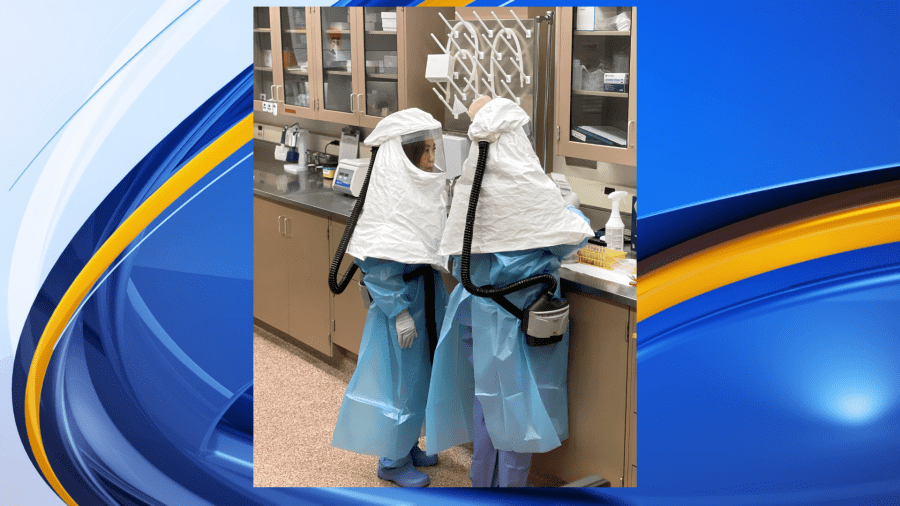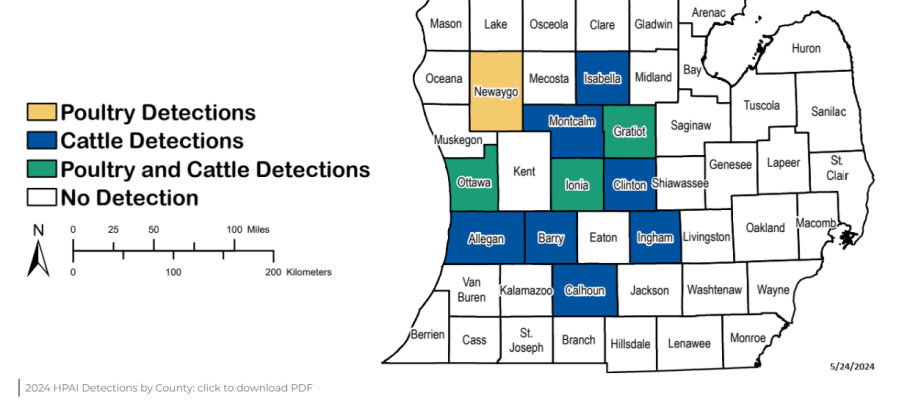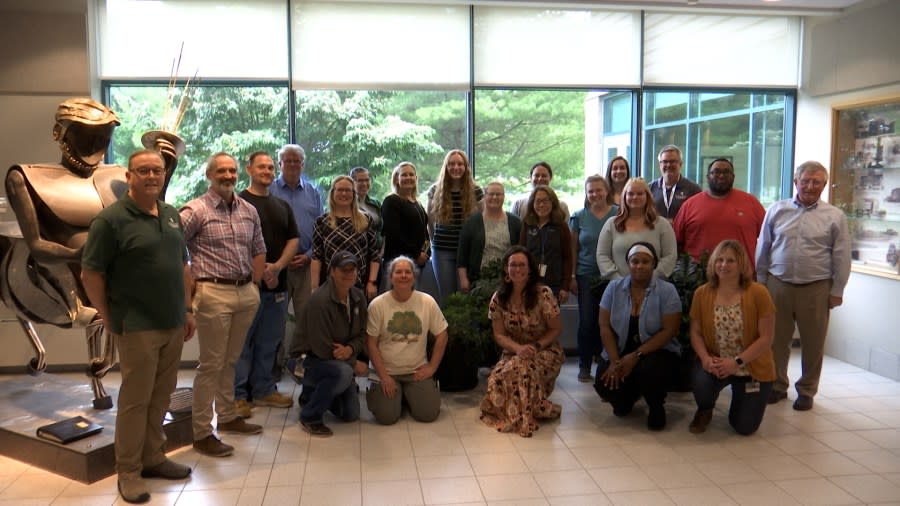Meet the MSU lab team on frontline of bird flu outbreak
EAST LANSING, Mich. (WLNS) – As “highly pathogenic avian influenza” concerns increase for poultry and cattle farmers in Michigan, a team of more than a dozen lab workers at Michigan State University are on alert for the novel virus.
The lab, MSU’s Veterinary Diagnostic Laboratory, is part of a string of facilities working in step with state and federal officials that serves as a net to defend against the spread of the virus commonly referred to as “bird flu.” It’s a part of the MSU College of Veterinary Medicine.
The lab’s director, Dr. Kim Dodd, tells 6 News tracking the virus’ spread through Michigan is only part of its responsibilities. The facility is on the lookout for emerging pathogens that could impact wild or domestic animals as well as monitor to prevent diseases from spreading from animals to people.

“We serve as Michigan’s official Animal Health Laboratory – which means we’re here to test animals of any species, whether it’s a cat, cow, a duck or a llama,” she says.
Employees bustle through the lab during long hours processing samples from animals seeking evidence of a host of infectious agents as well as performing veterinary wellness checks.
Among the many pathogens the lab is on the hunt for is highly pathogenic avian influenza (HPAI). The infection has been detected in 11 counties in Michigan this year, the Michigan Department of Agriculture and Rural Development reports.

The virus in Michigan has been found in dairy herds and poultry facilities. Two Michigan farm workers have contracted the virus from contact with infected animals, but health officials report no human-to-human transmissions have been identified.
Because HPAI can infect and cause illness in humans, testing requires significant concentration as well as protective gear including fully contained suits with purified air.
“The whole shebang, you know – double gloves, double booties,” says Dr. Annabel Wise, an academic virology specialist who works in the lab.

She says samples generally arrive as swabs taken from poultry or containers filled with milk from dairy cows. Both have to be handled with caution which includes not only the personal protective gear but careful attention to transport the samples from the curbside to a room with negative pressure. The negative pressure room, as it’s called, is designed to have a lower air pressure than the surrounding rooms and cause air to flow into the room when a door in open, rather than out. That dynamic, in turn, keeps any potentially infectious materials in the room where testing occurs, and prevents human infections.
“We don’t know if there’s really live virus in there or not,” says Wise. “It can be a negative sample, but we’re treating it as if it’s always has a virus in it.”
Once the sample is delivered to the negative pressure room, it’s treated in order to deactivate any virus that may be present. Samples are then tested.
Along with HPAI, the sample is also quickly tested for other diseases to give researchers and staff a better picture of the animal’s health.
Negative samples are noted and later destroyed.
Any sample with a “presumptive positive” is sent to federal officials in Iowa. Wise says the lab in Iowa generally has results for its testing the next day.
Dodd, the lab director, says the ongoing HPAI outbreak began in 2022. She says the virus made the “unusual” transition from migratory birds to farm poultry to cattle and – to date – to three humans.
Dodd credits her team for continuing the work even as the demand for sample testing increases.
“We never have a shortage of volunteers to stay late, or work weekends, to meet the needs of the disease outbreak,” she says.
Containing and ultimately controlling the outbreak of HPAI, is not only the team in the MSU operation but the network of labs connected to detecting and monitoring HPAI across the state and the nation.
That network combined is not only identifying new hotspots but carefully mapping the genetic makeup of each detected virus – noting changes in the viral structure as well as the behavior of the virus.
Copyright 2024 Nexstar Media, Inc. All rights reserved. This material may not be published, broadcast, rewritten, or redistributed.
For the latest news, weather, sports, and streaming video, head to WLNS 6 News.

